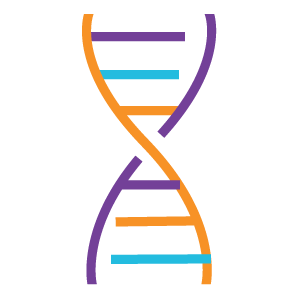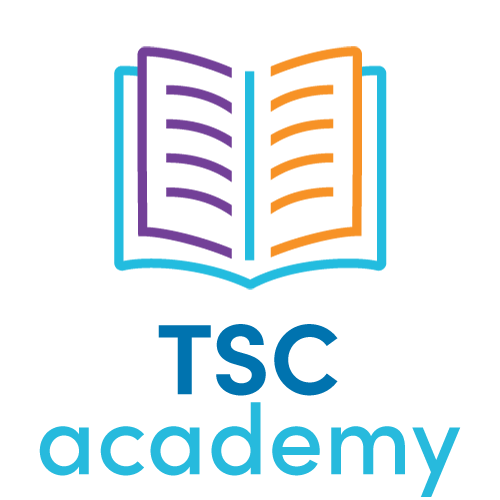The following table provides guidelines to help you and your loved one manage the treatment of TSC. Additional information for your physician is available here.
Surveillance & management recommendations for TSC
| For the Newly Diagnosed or Suspected TSC | For Individuals Already Diagnosed with TSC | |
|---|---|---|
| Genetics
|
Obtain three-generation family history to assess for additional family members at risk of TSC. | Offer genetic testing and family counseling if not performed previously. |
| Offer genetic testing for family counseling or when TSC diagnosis is in question but cannot be clinically confirmed. | ||
Brain |
Obtain magnetic resonance imaging (MRI) of the brain to assess for the presence of tubers, subependymal nodules (SEN), migrational defects, and subependymal giant cell astrocytoma (SEGA). | Obtain magnetic resonance imaging (MRI) of the brain every 1 to 3 years in asymptomatic TSC patients younger than age 25 years to monitor for new occurrence of subependymal giant cell astrocytoma (SEGA). Patients with large or growing SEGA, or with SEGA causing ventricular enlargement but yet are still asymptomatic, should undergo MRI scans more frequently, and patients and families should be educated regarding the potential of new symptoms. Patients with asymptomatic SEGA in childhood should continue to be imaged periodically as adults to ensure there is no growth. |
| During infancy, educate parents to recognize infantile spasms and focal seizures, even if none have occurred at the time of first diagnosis. | Surgical resection should be performed for acutely symptomatic SEGA. Cerebral spinal fluid diversion (shunt) may also be necessary. Either surgical resection or medical treatment with target of rapamycin inhibitors (mTORi) may be used for growing but otherwise asymptomatic SEGA. For large tumors, if clinical condition enables, neoadjuvant treatment with mTORi may facilitate surgery. Minimally invasive surgical techniques may increase surgical safety in selected patients. In determining the best treatment option, discussion of the complication risks, adverse effects, cost, length of treatment, and potential impact on TSC-associated comorbidities should be included in the decision-making process. | |
| Obtain baseline routine electroencephalogram (EEG) while awake and asleep. If abnormal, especially if features of TSC-associated neuropsychiatric disorders (TAND) are also present, follow up with 8- to 24-hour video EEG to assess for seizure activity. | Obtain routine electroencephalograph (EEG) in asymptomatic infants with TSC every 6 weeks up to age 12 months and every 3 months up to age 24 months, as abnormal EEG frequently precedes onset of clinical seizures. | |
| Obtain routine EEG in individuals with known or suspected seizure activity. The frequency of routine EEG should be determined by clinical need rather than a specific defined interval. Prolonged video EEG, 24 hours or longer, is appropriate when seizure occurrence is unclear or when unexplained sleep, behavioral changes, or other alteration in cognitive or neurological function is present. | ||
| Vigabatrin is the recommended first-line therapy for infantile spasms. Adrenocorticotropic hormone (ACTH), synthetic ACTH or prednisolone can be used if treatment with full-dose vigabatrin for 2 weeks has not correlated with clinical improvement. | ||
| Antiseizure medications (ASMs) for other seizure types in TSC should generally follow that of other epilepsies. Everolimus and a specific cannabidiol formulation are approved by regulatory authorities for treatment of seizures associated with TSC. No comparative effectiveness data exist to recommend ASMs, everolimus, cannabidiol, or dietary therapies over one another in specific subsets of patients. | ||
| Epilepsy surgery should be considered for medically refractory TSC patients at epilepsy surgery centers with expertise in TSC. Special consideration should be given to children at younger ages experiencing neurological regression and is best if performed at epilepsy surgery centers with experience and expertise in TSC. | ||
TAND |
Perform comprehensive assessment for TSC-Associated Neuropsychiatric Disorders (TAND) across all levels of potential TAND manifestations. | Perform annual screening for TAND, using validated screening tools such as the TAND Checklist. Screening may be done more frequently depending on clinical needs. When any concerns are identified on screening, proceed to further evaluations by appropriate professionals to diagnose and treat the relevant TAND manifestation(s). |
| Refer as appropriate to suitable professionals to initiate evidence-based interventions based on the TAND profile of needs identified above | Perform comprehensive formal evaluation for TAND across all levels of TAND at key developmental time points: infancy (0 to 3 years), preschool (3 to 6 years), pre-middle school (6 to 9 years), adolescence (12 to 16 years), early adulthood (18 to 25 years), and as needed thereafter. | |
| Provide parent/caregiver education and training about TAND to ensure families know what to look out for in emerging TAND manifestations (e.g., autism spectrum disorder, language disorders, attention deficit hyperactivity disorder, anxiety disorders). | Refer to appropriate professionals for the management/intervention of relevant TAND manifestations. Interventions should be personalized to the TAND profile of each individual and be based on evidence-based practice guidelines/practice parameters for individual manifestations (e.g., autism spectrum disorder, attention deficit hyperactivity disorder, anxiety disorder). | |
| Provide psychological and social support to families around diagnosis, coming to terms with the diagnosis of TSC and TAND, and ensure strategies are in place to support caregiver well-being. | Aim for early identification of TAND manifestations and early intervention. | |
| Many people with TSC have academic/scholastic difficulties. Therefore, always consider the need for an individual educational program (IEP/IEDP). | ||
| Sudden and unexpected change in behavior should prompt physical evaluation to look at potential medical causes (e.g., SEGA, seizures, renal disease, medications). | ||
| Provide psychological and social support to families and caregivers and ensure strategies are in place to support caregiver wellbeing. Continue to provide parent/caregiver education and training about TAND to ensure families know what to look out for in emerging TAND manifestations across the lifespan. | ||
Kidney |
Obtain MRI of the abdomen to assess for the presence of angiomyolipomas and renal cysts. | Obtain MRI of the abdomen to assess for the progression of angiomyolipoma and renal cystic disease every 1 to 3 years throughout the patient’s lifetime. |
| Evaluate renal function by determination of glomerular filtration rate (GFR). | Embolization followed by corticosteroids is first-line therapy for angiomyolipoma presenting with acute hemorrhage. Nephrectomy is to be avoided. For asymptomatic, growing angiomyolipoma measuring larger than 3 cm in diameter, treatment with an mTOR inhibitor is the recommended first-line therapy. Selective embolization or kidney-sparing resection are acceptable second-line therapy for asymptomatic angiomyolipoma. | |
Lung |
Inquire about tobacco exposure, connective tissue disease manifestations, signs of chyle leak, and pulmonary manifestations of dyspnea, cough, and spontaneous pneumothorax in all adult patients with TSC. | Inquire about smoking, occupational exposures, connective tissue disease (CTD) symptoms, chyle leak, and pulmonary manifestations such as dyspnea, cough, and spontaneous pneumothorax in all adults at each clinic visit. |
| Perform baseline chest CT in all females, and symptomatic males, starting at the age of 18 years or older. | For adult females with a negative screening CT who remain asymptomatic, obtain high resolution CT (HRCT) to screen for the presence of LAM every 5 years through menopause. Low-dose CT protocols preferred. | |
| Perform baseline PFTs and 6MWT in patients with evidence of cystic lung disease consistent with LAM on the screening chest CT. | For patients with evidence of cystic lung disease consistent with LAM on screening CT, obtain follow-up HRCT after 1 to 3 years, and on a case-by-case basis thereafter at least every 5 years depending upon the individual circumstances. Low-dose CT protocols preferred. | |
| Perform routine serial PFT monitoring at least annually in patients with evidence of LAM on HRCT and more frequently in patients who are progressing rapidly or who are being monitored for response to therapy. | ||
| Use mTOR inhibitors for treatment of LAM in patients with abnormal lung function (FEV1 < 70% predicted), physiological evidence of substantial disease burden (abnormal DLCO (<80% or less than lower limit of normal [when available]), air trapping (RV > 120%), resting or exercise-induced oxygen desaturation), rapid decline (rate of decline in FEV1 > 90ml/year), and problematic chylous effusions. | ||
| Counsel patients regarding the risk of pregnancy and exogenous estrogen use. Avoid routine use of hormonal therapy or doxycycline for the treatment of LAM. Advise patients against tobacco smoke exposure. | ||
| Trial inhaled bronchodilators in patients with symptoms of wheezing, dyspnea, chest tightness, or obstructive defect on spirometry, with continued use in patients who derive symptomatic benefit. | ||
| Consider measurement of annual VEGF-D levels in patients who are unable to perform reliable PFTs to monitor adequacy of pharmacodynamic suppression of the mTOR pathway. | ||
Skin |
Perform a detailed clinical dermatologic inspection/exam. | Perform annual skin examinations for children with TSC. Adult dermatologic evaluation frequency depends on the cutaneous manifestation. Close surveillance and intervention are generally recommended for TSC-related skin lesions that rapidly change in size and/or number, cause functional interference, pain, or bleeding, or inhibit social interactions. |
| Provide ongoing education on sun protection. | ||
| For flat or minimally elevated lesions, topical mTOR inhibitor treatment is recommended. Watch for improvement in skin lesions over several months; if lesions do not improve, or if earlier intervention is indicated, then consider use of surgical approaches. For protuberant lesions, consider surgical approaches (e.g., excision, lasers). | ||
Teeth |
Perform a detailed clinical dental inspection/exam. | Perform a detailed clinical dental inspection/exam at minimum every 6 months. Take a panoramic radiograph to evaluate dental development or if asymmetry, asymptomatic swelling, or delayed/ abnormal tooth eruption occurs. |
| Enamel pits may be managed by preventive measures as first-line treatment (sealants, fluoride). They may be managed by restorations if preventive measures fail, or if symptomatic, carious, or there is an aesthetic concern. | ||
| Symptomatic or deforming oral fibromas and bony jaw lesions should be treated with surgical excision or curettage when present. | ||
Heart |
Consider fetal echocardiography to detect individuals with high risk of heart failure after delivery when rhabdomyomas are identified via prenatal ultrasound. | Obtain an echocardiogram every 1 to 3 years in asymptomatic pediatric patients until regression of cardiac rhabdomyomas is documented. More frequent or advanced diagnostic assessment may be required for symptomatic patients. |
| Obtain an echocardiogram in pediatric patients, especially if younger than three years of age | Obtain electrocardiogram every 3 to 5 years in asymptomatic patients of all ages to monitor for conduction defects. More frequent or advanced diagnostic assessment such as ambulatory and event monitoring may be required for symptomatic patients. | |
| Obtain an electrocardiogram in all ages to assess for underlying conduction defects. | ||
Eye |
Perform a complete ophthalmologic evaluation, including dilated fundoscopy, to assess for retinal findings (astrocytic hamartoma and achromic patch) and visual field deficits. | Perform annual ophthalmic evaluation for those with or without visual symptoms at baseline. Rare cases of aggressive lesions or those causing vision loss due to their location affecting the fovea or optic nerve may require intervention. mTOR inhibitors have been used with some success to treat problematic retinal astrocytic hamartomas. |
| For patients receiving vigabatrin, there are specific concerns related to visual field loss which appears to correlate with total cumulative dose. Physicians responsible for monitoring children on Vigabatrin can offer serial fundus examinations to detect retinal changes. | ||
Other |
Identification of unexpected functional and nonfunctional pancreatic neuroendrocrine tumors (PNETS) have been found during abdominal MRI surveillance in individuals with TSC. Further monitoring and evaluation should be referred to endocrinology. |








